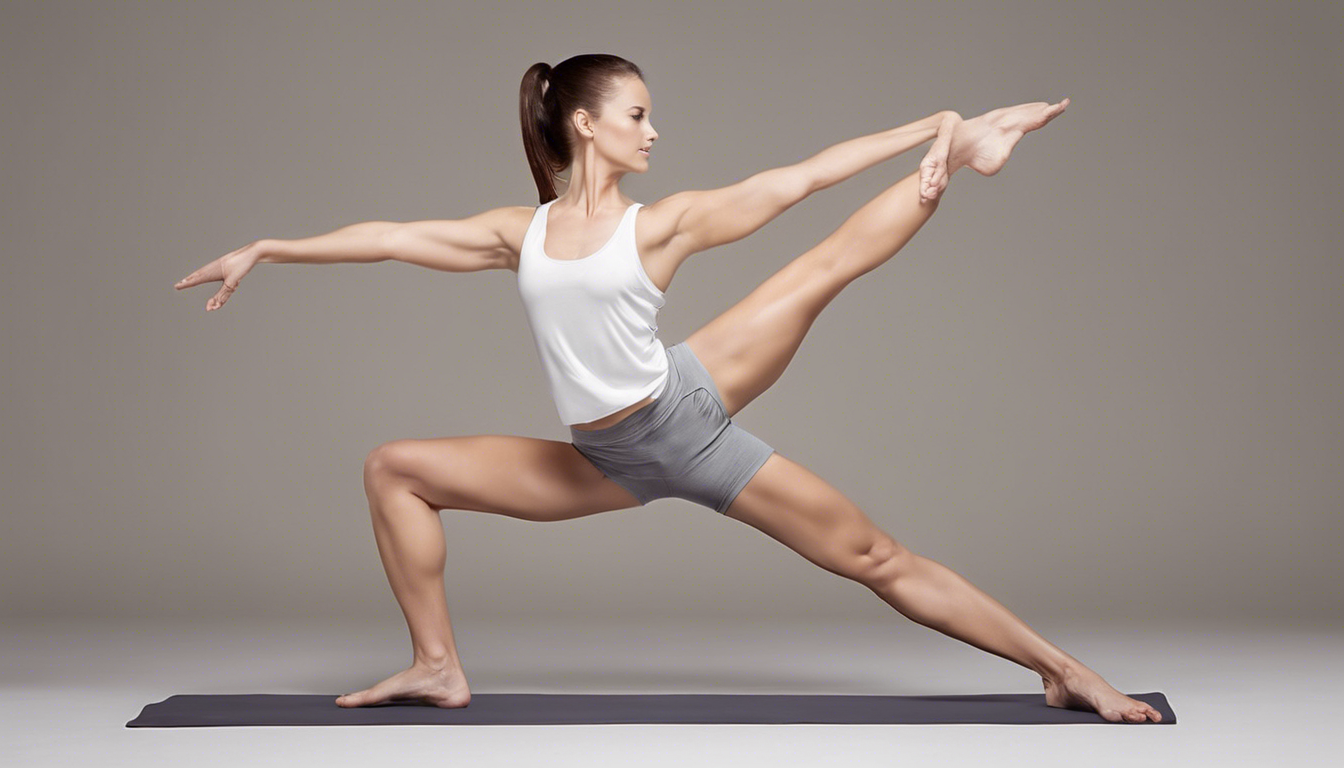Stretching exercises are essential for anyone looking to enhance their flexibility, improve their performance in physical activities, and reduce the risk of injury.
Whether you’re an athlete, a dedicated fitness enthusiast, or someone just starting their wellness journey, understanding the importance and benefits of stretching can make a significant difference in your routine.
In this ultimate guide, we’ll delve into the varying types of stretching exercises, highlight the best routines for beginners, and provide tips for creating an effective stretching routine.
Additionally, we’ll cover common stretching mistakes and introduce advanced techniques for those looking to take their flexibility to the next level.
Get ready to unlock your body’s potential!
Your Sciatica Pain-Free Future Starts Here – Click to Learn More!
Key Takeaways
- Regular stretching exercises improve flexibility and overall physical health.
- Dynamic stretching is ideal for warm-ups, while static stretching is better for cool-downs.
- Beginners should focus on simple, effective stretches to build strength and flexibility.
- Establishing a consistent stretching routine can enhance results and prevent injuries.
- Avoid common stretching mistakes to ensure proper technique and maximize benefits.
Introduction to Stretching Exercises: Importance and Benefits
Stretching exercises play a crucial role in enhancing overall fitness and well-being.
By incorporating regular stretching into your routine, you can improve flexibility, increase range of motion, and reduce the risk of injuries.
Not only do these exercises help in muscle recovery and decrease muscle tension, but they also promote improved posture and circulation.
Engaging in a variety of stretching exercises can enhance athletic performance and provide a sense of relaxation and stress relief as well.
Whether you’re an athlete aiming to optimize your workout or someone looking to maintain mobility in daily life, understanding the importance and benefits of stretching exercises is essential for everyone.
Types of Stretching Exercises: Dynamic vs. Static
When it comes to incorporating stretching exercises into your fitness routine, understanding the difference between dynamic and static stretching is crucial.
Dynamic stretching exercises are typically performed before workouts and involve movement that increases blood flow and warms up the muscles.
Examples include arm circles and leg swings, which help improve flexibility and range of motion, preparing the body for physical activity.
On the other hand, static stretching exercises are best suited for post-workout or cool-down periods.
These involve holding a stretch for a specific duration, like hamstring stretches or triceps stretches, and aim to increase flexibility in a relaxed state.
By knowing when to use dynamic and static stretching exercises, you can enhance your overall performance and reduce the risk of injury.
‘The best stretch in the world is the one you do regularly.’ – Unknown
The Best Stretching Exercises for Beginners
Stretching exercises are essential for anyone looking to improve flexibility, enhance performance, and prevent injury, especially for beginners embarking on a fitness journey.
Starting with simple stretches can significantly contribute to your overall body mobility and well-being.
Begin with the classic standing quad stretch, where you pull your foot toward your glutes while standing on one leg, which not only stretches your quadriceps but also improves balance.
Another excellent stretching exercise is the seated forward bend, where you sit with your legs extended and reach towards your toes, promoting a gentle stretch along your spine and hamstrings.
Incorporating the cat-cow stretch is also beneficial, as it warms up your spine and improves coordination between movement and breath.
Each of these stretching exercises can be performed in the morning to wake up your muscles or post-workout to aid recovery.
As a beginner, remember to listen to your body and hold each stretch for 15-30 seconds to reap maximum benefits.
Your Sciatica Pain-Free Future Starts Here – Click to Learn More!
Creating a Stretching Routine: Tips and Techniques
Creating a stretching routine can significantly enhance your overall flexibility and physical well-being.
When it comes to incorporating stretching exercises into your daily regimen, it’s essential to focus on technique and consistency.
Begin with a warm-up to loosen your muscles before diving into more extensive stretches.
Aim to include a combination of static and dynamic stretching exercises, targeting major muscle groups such as your hamstrings, quads, shoulders, and back.
For static stretches, hold each position for 15 to 30 seconds, ensuring you feel a gentle pull, not pain.
Dynamic stretches, on the other hand, involve movement and are best done before workouts to prepare your body.
Don’t forget to listen to your body—if a particular stretching exercise doesn’t feel right, adjust your form or skip it altogether.
By establishing a regular routine with these techniques, you’ll not only improve flexibility but also reduce the risk of injury.
Common Mistakes to Avoid When Stretching
Stretching exercises are a vital part of any fitness routine, as they help improve flexibility, range of motion, and can aid in injury prevention.
However, many individuals make common mistakes that can hinder their progress and even lead to injuries.
One prevalent mistake is stretching cold muscles; it’s essential to perform a light warm-up before engaging in stretching exercises to increase blood flow and prepare your body.
Another mistake is holding stretches for too short a time; for maximum effectiveness, aim to hold stretches for at least 20-30 seconds.
Additionally, avoid bouncing during stretches, as this can result in muscle strain.
Instead, opt for steady, controlled movements.
By being aware of these pitfalls, you can ensure that your stretching exercises yield the best results and contribute positively to your overall fitness journey.
FAQs
What are the benefits of stretching exercises?
Stretching exercises can improve flexibility, enhance athletic performance, reduce the risk of injury, alleviate muscle tension, and increase blood flow to the muscles.
What is the difference between dynamic and static stretching?
Dynamic stretching involves moving parts of your body through a range of motion, usually through controlled movements, while static stretching involves holding a stretch at a single position for a period.
Are stretching exercises safe for beginners?
Yes, stretching exercises are generally safe for beginners, especially when performed correctly.
It’s important to start slowly and focus on proper technique.
How often should I practice stretching exercises?
For optimal benefits, aim to stretch at least 2-3 times a week, incorporating both dynamic and static stretches based on your activity level.
What are common mistakes to avoid when stretching?
Common mistakes include bouncing while stretching, holding your breath, stretching cold muscles, and overstretching.
Focus on gradual movements and listen to your body.






